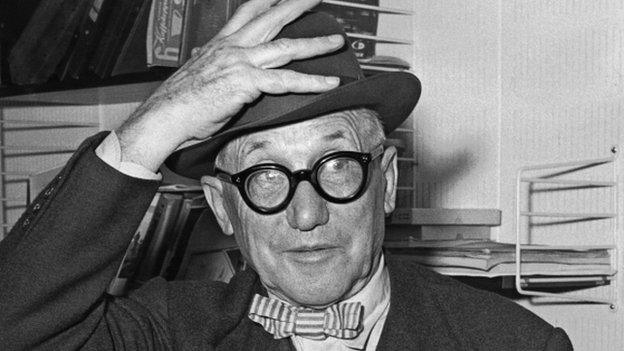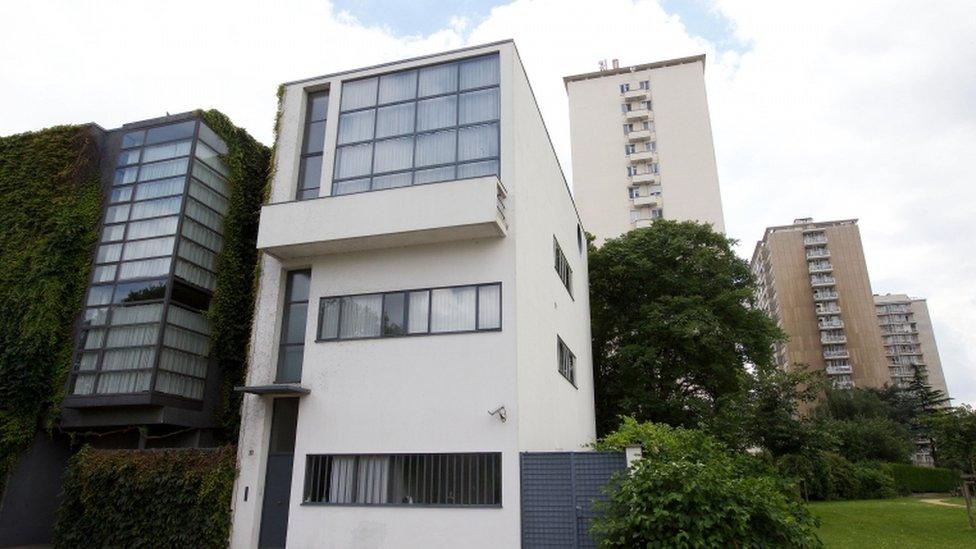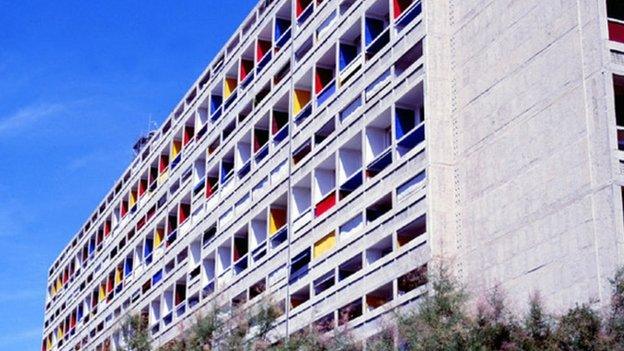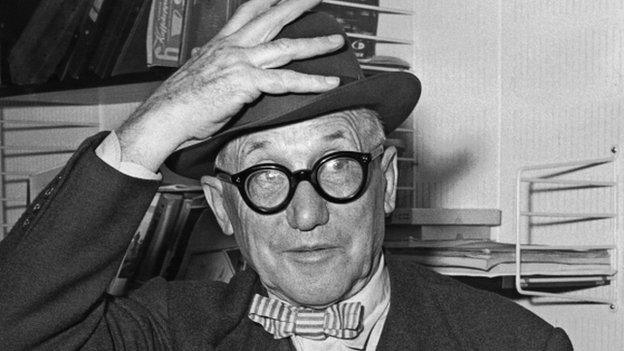Le Corbusier works named as UN world heritage sites
- Published

Le Corbusier - an influential but controversial figure
The UN's cultural organisation has listed 17 works by pioneering Franco-Swiss architect Le Corbusier as world heritage sites.
Le Corbusier spearheaded the modern movement after World War One, using iron, concrete and glass in a new focus on bold lines and functionality that did not appeal to everyone.
The sites are in seven countries.
They include La Cite Radieuse in Marseille, Maison Guiette in Antwerp and the Indian city of Chandigarh.

The Palace of Assembly, part of the Capital Complex in Chandigarh

La Maison Guiette in Antwerp, Belgium

The National Museum of Western Art in Tokyo

Le Corbusier House at the Weissenhof Estate in Stuttgart, Germany
The UN Educational, Scientific and Cultural Organization (Unesco), external said the works reflected "a new architectural language that made a break with the past".
It said sites such as the National Museum of Western Art in Tokyo and the House of Dr Curutchet in La Plata, Argentina, reflected how the Modern Movement sought to meet "the challenges of inventing new architectural techniques to respond to the needs of society".
Ten of the sites are in France and include the Dominican monastery of La Tourette near Lyon and La Villa Savoye near Paris.
Others are in Switzerland, Belgium, Germany, Argentina, Japan and India.
Le Corbusier was born Charles-Edouard Jeanneret-Gris in La Chaux-de-Fonds, Switzerland, in 1887, and adopted French nationality in 1930, dying there in 1965.

La Cite Radieuse, Marseille: An iconic work

La Cite Radieuse, Marseille
Le Corbusier developed a residential housing principle called Unité d'Habitation - he thought the tower block was the solution for re-housing the masses that had been displaced during World War Two
The most famous example was La Cite Radieuse (Radiant City) in Marseille, which was completed in 1952 and is often credited for inspiring the Brutalist style of architecture prevalent in the 1960s
The building, made of rough-cast concrete, has 337 apartments over 12 floors, all suspended on large pillars, and arranged around the concept of "internal streets". It also has sports, medical and educational facilities, a hotel and a restaurant

The Swiss government hailed the UN's decision, saying Le Corbusier had made "a central contribution to modern architecture".
Nevertheless, his legacy remains - like his surname - a grey area, and not just for inspiring the brutalism movement of the 1950s to 1970s.
Two recent books accused him of fascist and anti-Semitic views, pointing among other things to his links to the Vichy government during World War Two.
Others reject linking the work of Le Corbusier to totalitarianism, or paint him instead as an ideologist interested simply in the potential of architecture.
The other three world heritage sites it named on Sunday were:
Antigua Naval Dockyard and Related Archaeological Sites (Antigua and Barbuda)
Pampulha Modern Ensemble (Brazil)
Khangchendzonga National Park (India)
- Published5 May 2015
